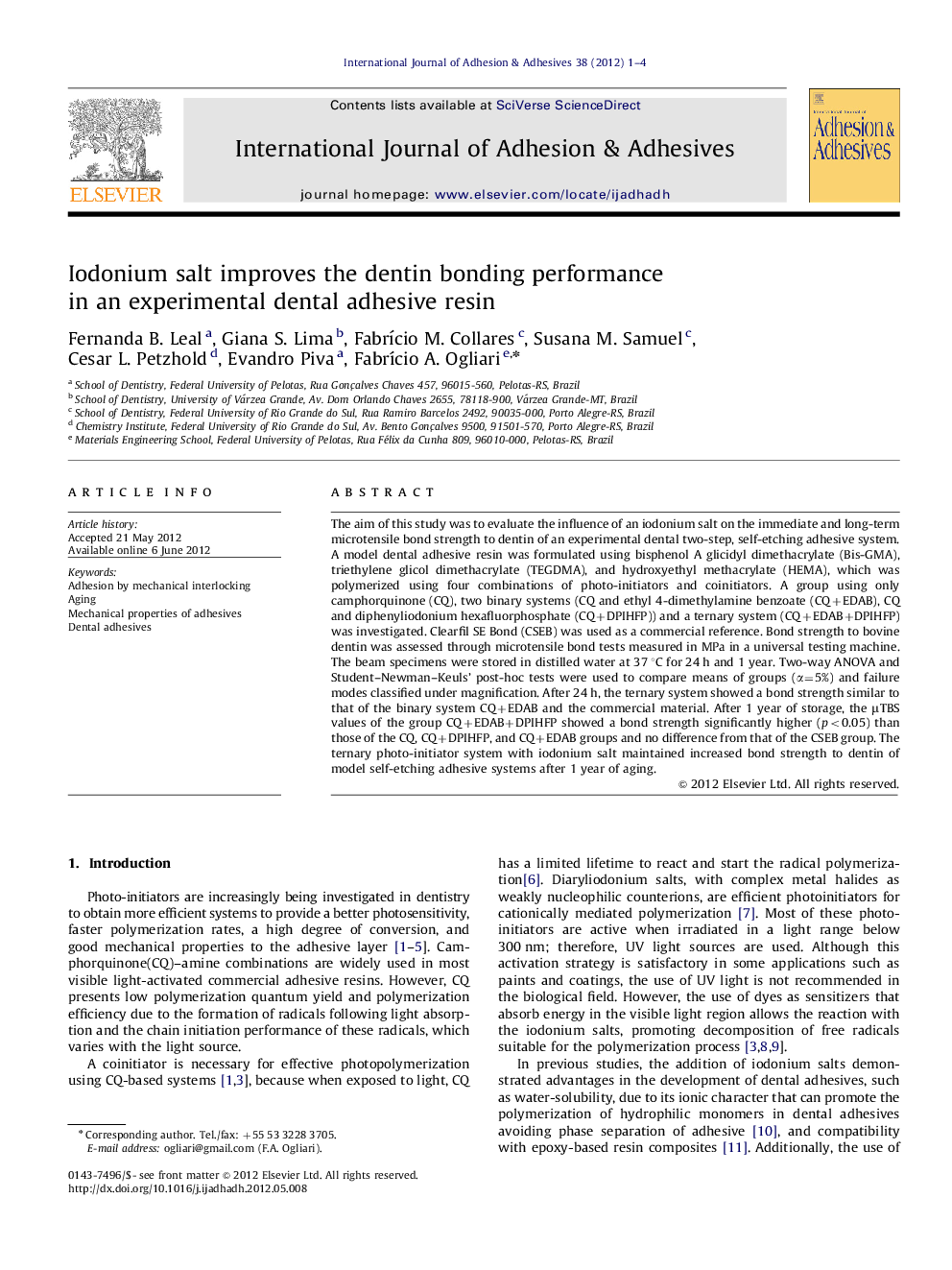| Article ID | Journal | Published Year | Pages | File Type |
|---|---|---|---|---|
| 776965 | International Journal of Adhesion and Adhesives | 2012 | 4 Pages |
The aim of this study was to evaluate the influence of an iodonium salt on the immediate and long-term microtensile bond strength to dentin of an experimental dental two-step, self-etching adhesive system. A model dental adhesive resin was formulated using bisphenol A glicidyl dimethacrylate (Bis-GMA), triethylene glicol dimethacrylate (TEGDMA), and hydroxyethyl methacrylate (HEMA), which was polymerized using four combinations of photo-initiators and coinitiators. A group using only camphorquinone (CQ), two binary systems (CQ and ethyl 4-dimethylamine benzoate (CQ+EDAB), CQ and diphenyliodonium hexafluorphosphate (CQ+DPIHFP)) and a ternary system (CQ+EDAB+DPIHFP) was investigated. Clearfil SE Bond (CSEB) was used as a commercial reference. Bond strength to bovine dentin was assessed through microtensile bond tests measured in MPa in a universal testing machine. The beam specimens were stored in distilled water at 37 °C for 24 h and 1 year. Two-way ANOVA and Student–Newman–Keuls' post-hoc tests were used to compare means of groups (α=5%) and failure modes classified under magnification. After 24 h, the ternary system showed a bond strength similar to that of the binary system CQ+EDAB and the commercial material. After 1 year of storage, the μTBS values of the group CQ+EDAB+DPIHFP showed a bond strength significantly higher (p<0.05) than those of the CQ, CQ+DPIHFP, and CQ+EDAB groups and no difference from that of the CSEB group. The ternary photo-initiator system with iodonium salt maintained increased bond strength to dentin of model self-etching adhesive systems after 1 year of aging.
